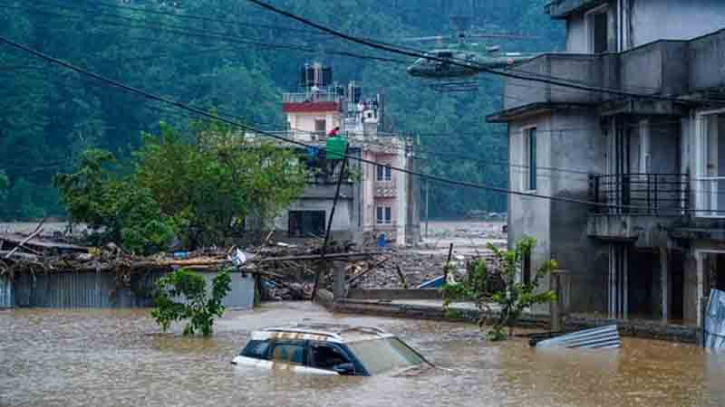101 Dead in Nepal Floods Following Intense Monsoon Rains

Low-lying areas in Nepal's capital, Kathmandu, were flooded on Sunday as relentless monsoon rains triggered surging floodwaters. According to police reports, at least 101 people have lost their lives across the Himalayan nation due to the devastating conditions.
Floods and landslides caused by heavy rains are common across South Asia during the monsoon season, which lasts from June to September. However, experts are warning that climate change is exacerbating the frequency and severity of such disasters.
Since Friday, large parts of eastern and central Nepal have been submerged, with flash floods affecting several rivers and causing extensive damage to highways throughout the country.
"The death toll has now reached 101, and 64 people remain missing," police spokesperson Dan Bahadur Karki told the press.
He added, "The death toll is likely to rise as search and rescue operations continue in the affected areas."
The Kathmandu valley saw 240 millimetres (9.4 inches) of rainfall in the 24 hours leading up to Saturday morning, according to Nepal’s weather bureau, as reported by the Kathmandu Post. It was the highest recorded rainfall in the capital since at least 1970.
The Bagmati River, along with its numerous tributaries that run through Kathmandu, burst its banks, flooding nearby homes and submerging vehicles.
Residents waded through chest-deep water to reach higher ground, with relief teams rescuing nearly 3,300 people by Sunday morning. More than 3,000 security personnel, along with helicopters and motorboats, have been deployed to assist in the ongoing rescue efforts.
Rescue teams have been using rafts to pull survivors to safety, while landslides have blocked several highways connecting Kathmandu to the rest of the country, leaving hundreds of travellers stranded.
"We have about eight locations where roads have been blocked by landslides," said Bishwaraj Khadka, a Kathmandu traffic police officer, on Saturday.
Domestic flights to and from Kathmandu resumed after a complete suspension caused by the weather on Friday evening, with more than 150 departures cancelled.
The summer monsoon accounts for 70-80 percent of South Asia's annual rainfall. Each year, monsoon rains from June to September bring widespread death and destruction to the region. The frequency of fatal floods and landslides has notably increased in recent years, a trend experts attribute to the worsening effects of climate change.
In July, a landslide in Chitwan district forced two buses carrying 59 passengers into a river. Although three people managed to escape, only 20 bodies were recovered, with turbulent floodwaters hampering further search efforts.
So far this year, over 260 people in Nepal have died due to rain-related disasters.
 (5).png)








